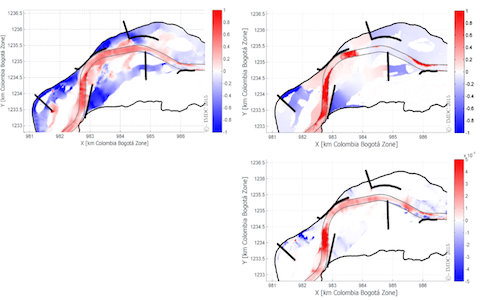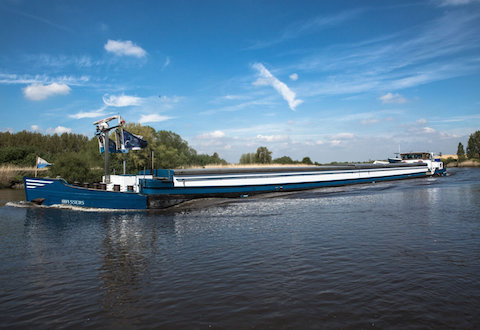Study of the traffic capacity of the waterways and navigation locks of the inland waterway network of the Nord Pas de Calais region
In relation with the construction of the Seine-Nord Europe canal connecting the Seine river basin in France with ports in Northern Europe (Belgium, Netherlands and Germany), the French waterway authority Voies navigables de France (VNF) investigates the necessity to upgrade its waterway network to CEMT class Vb, in order to cope with a foreseen traffic increase of a factor 3. In this context, VNF has selected IMDC to develop and use a state-of-the-art capacity model for inland navigation on this network. The model evaluates the effect of economic development scenarios, management policies, and recalibration measures on parameters such as transit and waiting times, transported volumes, lock operations and water use on the 240 km long waterway network.
The model has been developed using existing waterways traffic modelling software developed by IMDC (IMDC-Locks and IMDC-Waterways), a software solution which is able to handle branched networks as is the case of the Nord-Pas-de-Calais (NPdC) network. The model takes into account the dimensions and accessibility of the waterway (two-ways or various combinations of alternating traffic), speed limitations, lock operation times, etc. as well as traffic on the network. The accessibility of the network is derived from a trajectory study performed in parallel by IMDC.
Accessibility of the waterway defined in a trajectory study (also performed by IMDC) as input to the traffic capacity model
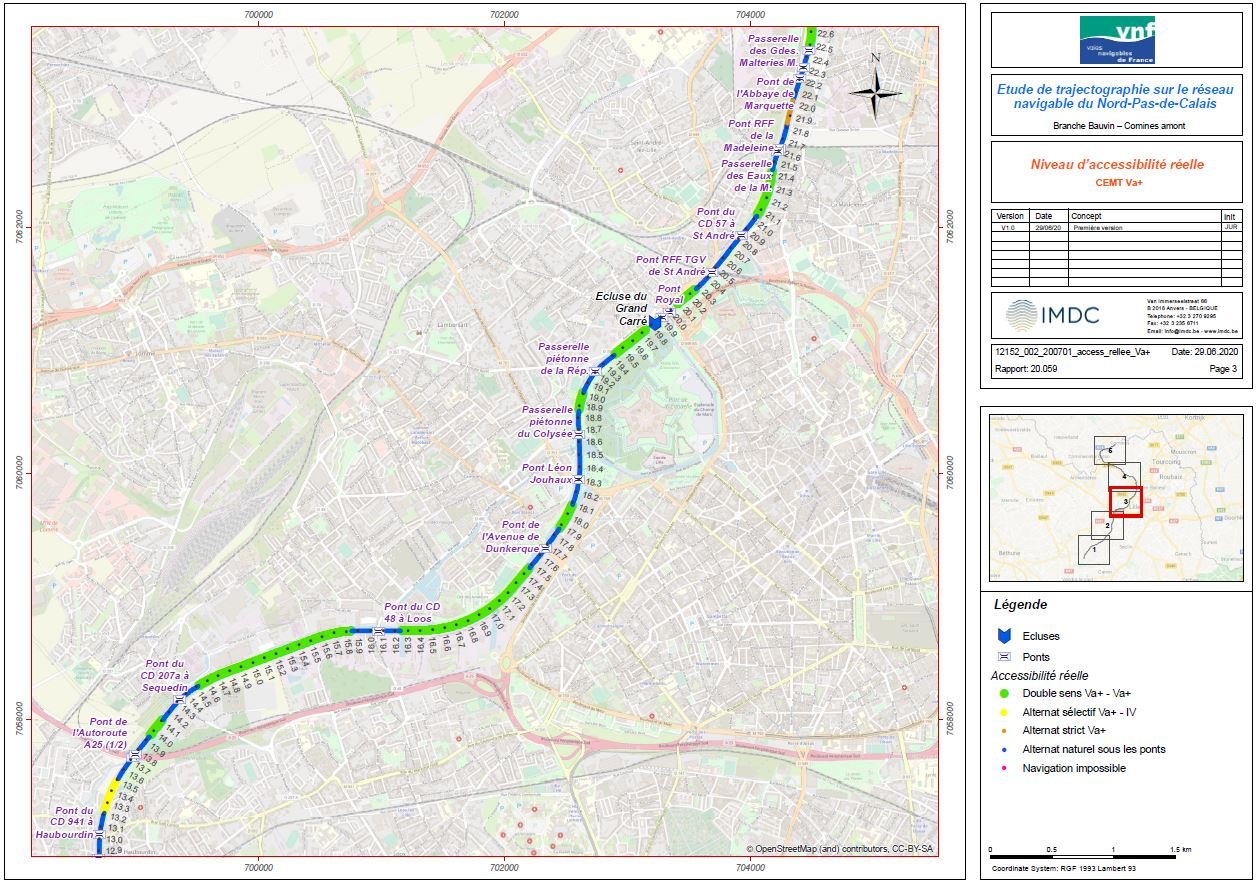
Traffic data is derived from origin-destination matrices that are compiled by VNF using trip declaration data. It is then introduced in the model before calibration runs are performed to fine tune the model. In this study, an independent set of traffic data, locks registries, was used for calibration. In a next step, the overall transported tonnage in the traffic generation has been multiplied by 2 and by 3 to emulate projected traffic increase. Once calibrated, the model can be used to simulate a wide variety of scenarios (upgrade of a stretch of waterway, lengthening or doubling of locks, etc.) for which indicators such as waiting time, water consumption, lock usage, etc. are computed.
Sailing time (green) and waiting time (red) for a trip on a given route on the NPdC network for a traffic (tonnage) multiplied by 2, for the reference scenario (left bar) and for 3 different investment scenarios (bars on the right)
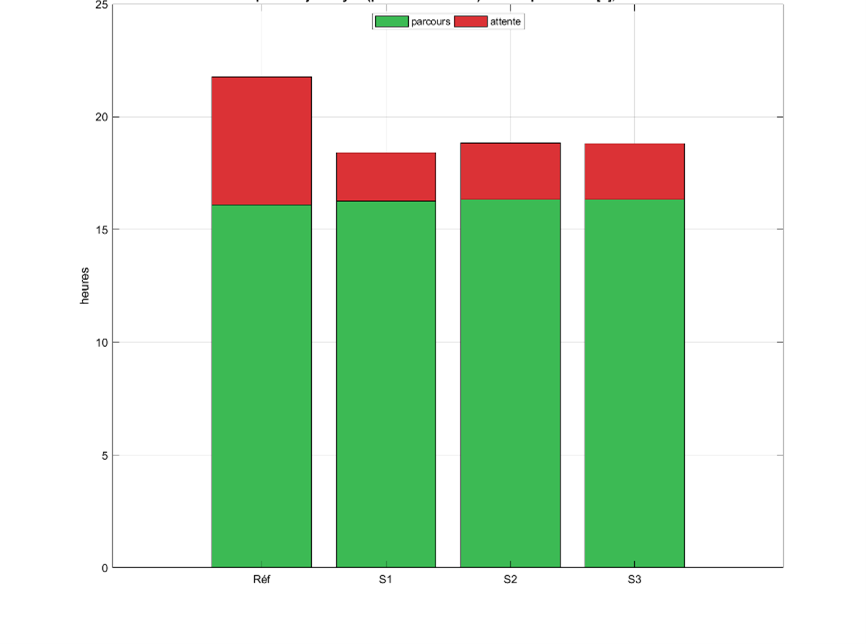

A web interface has also been developed to facilitate dissemination of the results.
Web interface developed to facilitate results dissemination
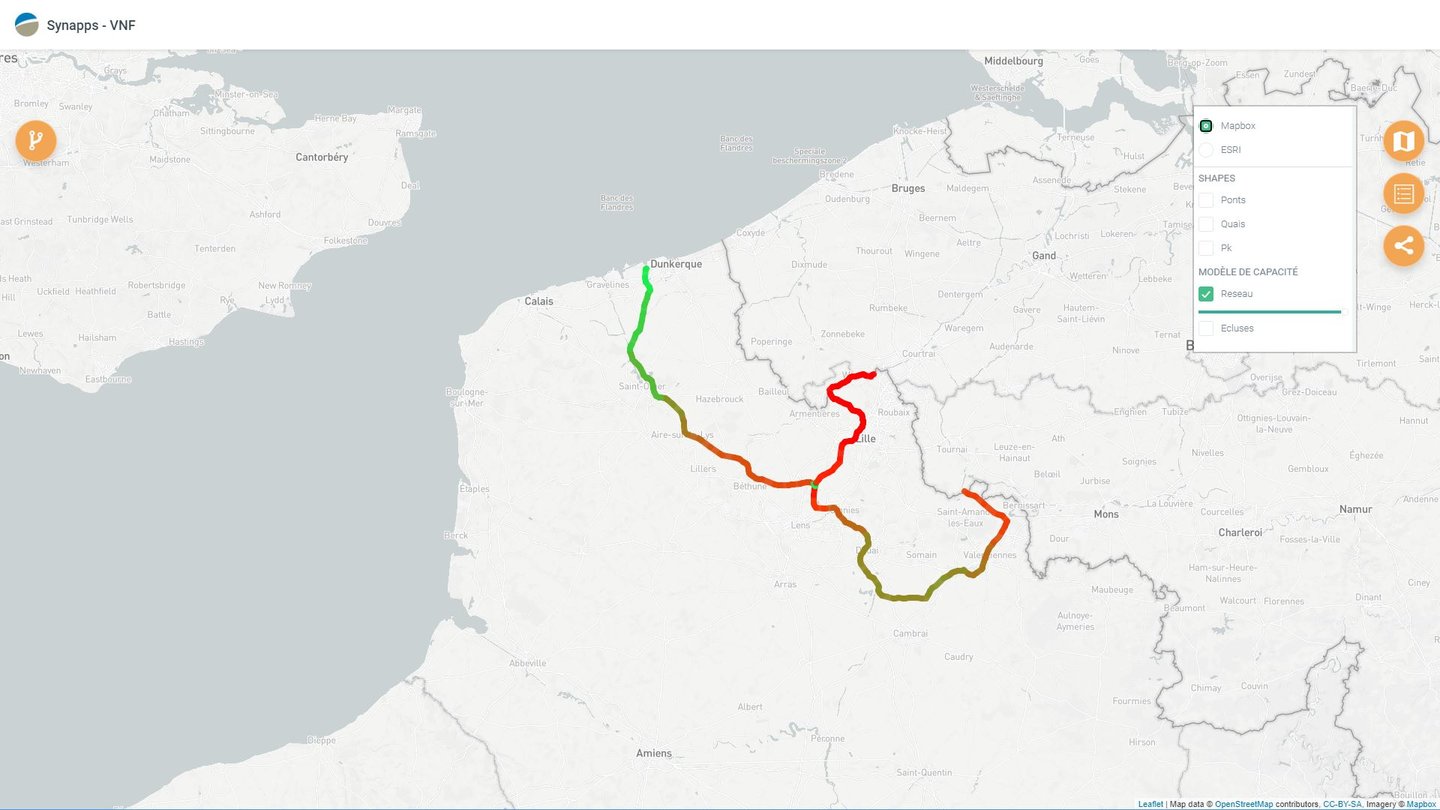
The results of the study help VNF select the preferred options for its investment strategy.
Data
- Client: Voies navigables de France
- Start date: 2017
- Completion date: 2021


